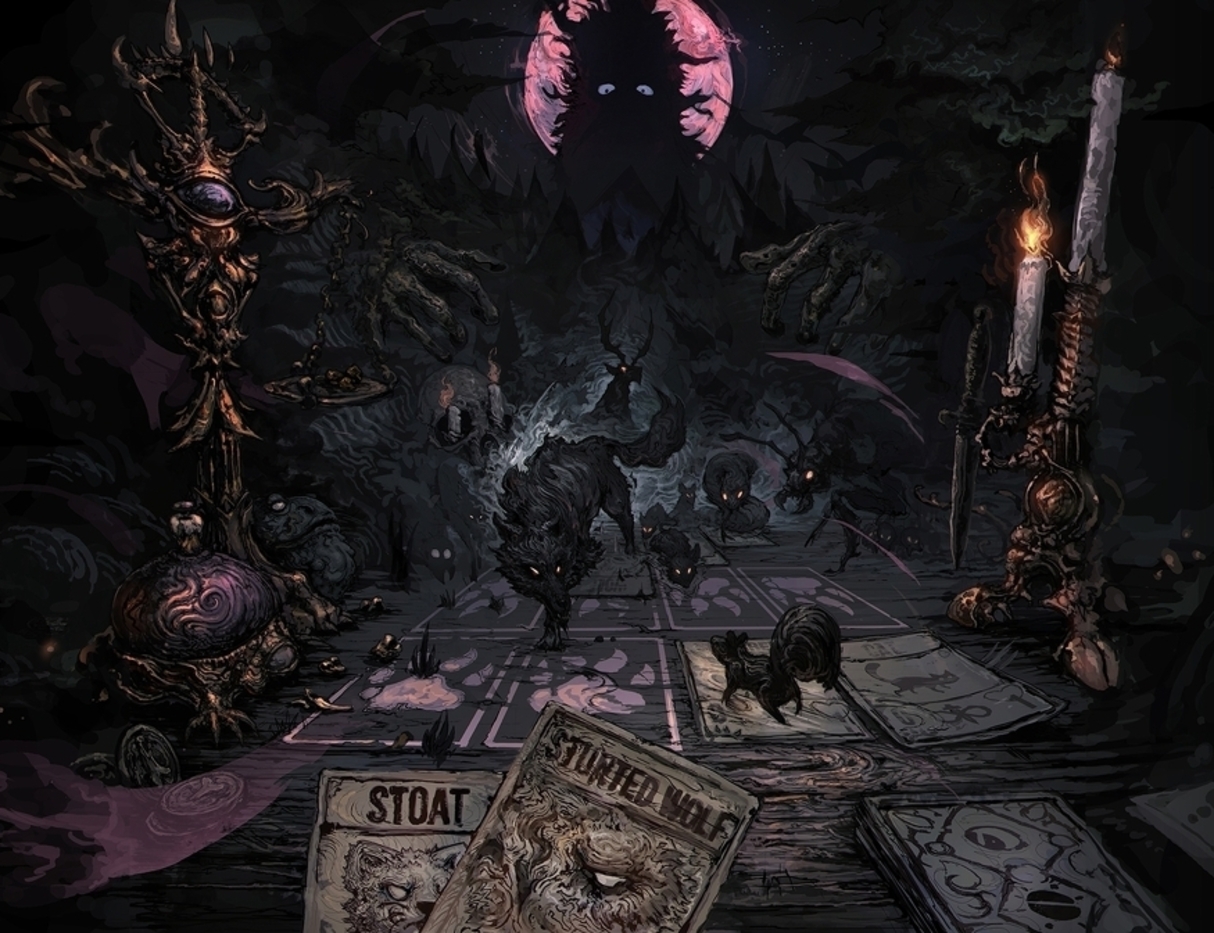
From across the dimly lit table, I am met with a pair of twisting orange eyes staring out of the darkness. They insist I draw a card. I don’t dare to think what will happen if I refuse.
I don’t usually go in for deckbuilding video games. Most fail to keep me interested without a wider context, or a story I’m already invested in. This might explain why The Witcher 3’s Gwent is the most fun I’ve had with a game of this kind. My favourite, that is, until last week.
Enter Inscryption, developed by Daniel Mullins Games, and Published by Devolver Digital. The second I saw gameplay I knew I had to play it. It very quickly displayed the enticing qualities I found so many other deckbuilding games lack; atmosphere, context, and a thoroughly engaging world to explore. More than that though, is the game’s defiance of narrative and gameplay norms. Every expectation was thrown back in my face, as I discovered the game had a second and a third act that almost completely changed the rules, as well as a meta-narrative that gives the player an additional, if cheesy, layer of context throughout. Further detail is meant for the player to discover for themselves however, so for now I’ll stick to the core gameplay of the first third of the game.
It begins in a locked cabin, where you are forced to play a game of cards with an ominously spectral opponent. Every card depicts one of several woodland creatures, each with their own stats and abilities. The mechanics of the game are brutal, involving blood and bones and sacrifices, all needed to advance your position with every game played. It is stressed throughout that should you fail, and lose too many times, then you will die.

And die you shall. Don’t worry though. The game is a roguelike, and death is just part of the story. This is where the game offers the first of its several revelations, in that you are not here to simply play cards. Before long, you discover you may stand from the table where you sit and investigate the surroundings of the room. The player is presented with puzzles and secrets, while your terrifying captor waits for you to regain your seat. With each death, with every renewed attempt, you will discover more about the rules, more about your opponent, the new characters of a surprisingly numerous cast, and about the secret means of a daring escape from this strange place.
Though I enjoyed the game immensely, particularly as it took on it’s new forms and surprised me with its scope, I was taken out a little during the second act. Without ruining the plot, there is a shift in art style that jarred with me a little, and which I quickly grew tired of. Then again, this might be because I struggled with the gameplay the most in this section. If you find yourself having difficulty in Act 2, all I will say is this: Let the game auto-generate and build a deck for you. I stubbornly refused to admit defeat with the decks I was creating, and got royally stuck for my troubles.
My ineptitude aside however, I loved when the game came full circle in the final act, and how the meta-narrative grew in relevance as the story came to a head. Upon finishing and watching the credits roll, I was also impressed by how the game has been made by a very small team, and how many of the assets were free-to-use pieces of work sourced from Unity, each object credited with the username of its maker. It made the potential of game design feel much closer, and more accessible than I used to believe.
Inscryption is an astonishing bit of storytelling and is an exemplar for small title design. With its atmosphere, mystery and mechanics, the game has you in its clutches from the word go, and wont release until it has defeated you, surprised you, and defied all your expectations. If you’re looking for something different, Inscryption really is a must.
